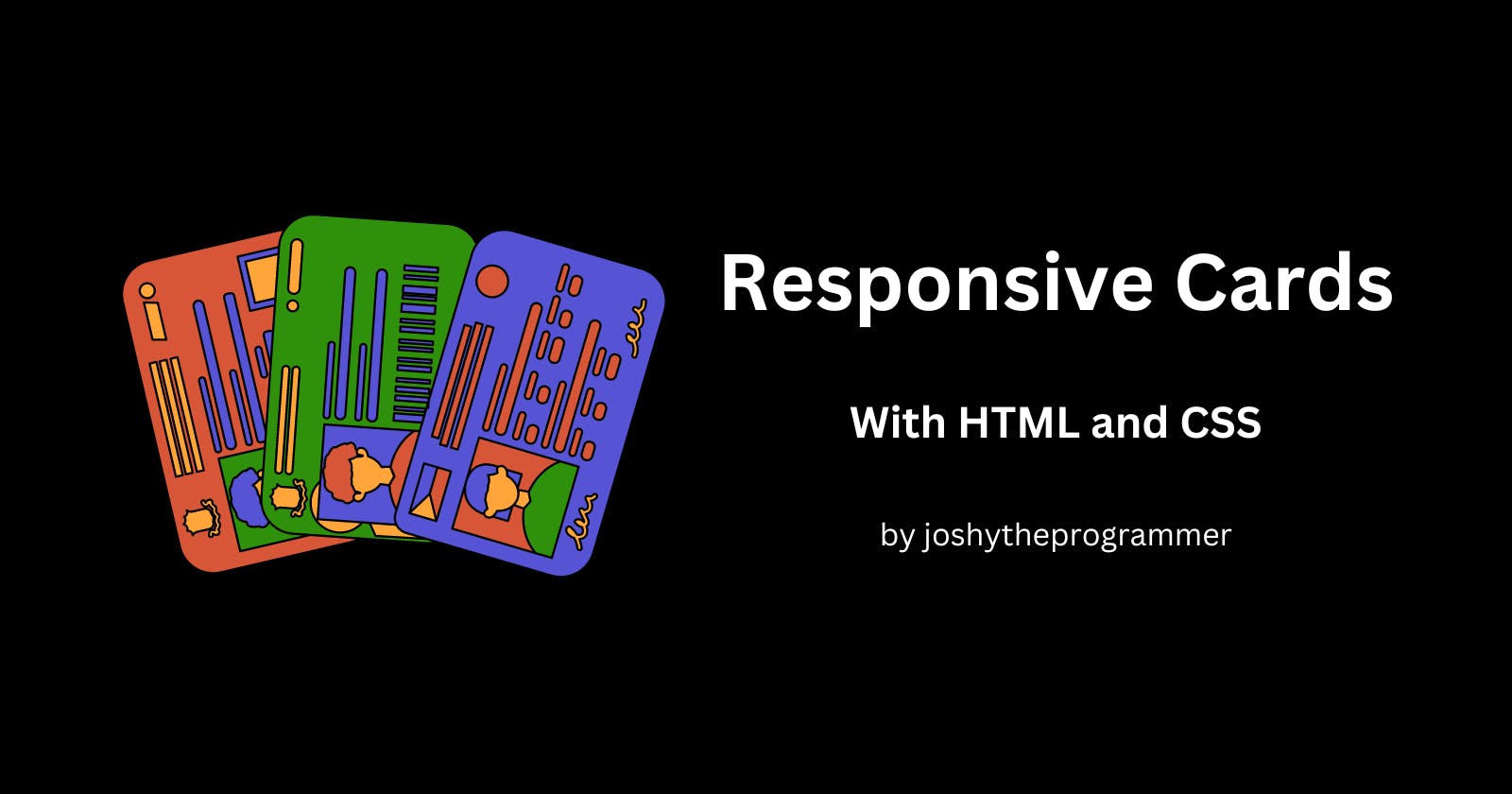Project Alert: Responsive Card Layout
Master the CSS Box Model and Positioning Properties with a Responsive Card Layout Project
A great HTML and CSS project to test your knowledge of the CSS box model and positioning properties is to create a responsive card layout. This project will challenge you to understand how to use margins, borders, padding, and positioning properties effectively to create a visually appealing and flexible card design that adjusts based on different screen sizes.
Objective: Create a responsive card layout using HTML and CSS, demonstrating mastery of the CSS box model and positioning properties.
Requirements:
The layout should consist of multiple cards, each representing a different piece of content (e.g., an article, product, or profile card).
Each card should have a consistent width and height, with a border, padding, and margin to create a visually appealing design.
The cards should stack vertically on smaller screens and form a grid on larger screens, using responsive design techniques.
Implement the positioning properties to align the content within the cards effectively.
Use media queries to ensure the layout adapts appropriately to different screen sizes.
Steps:
Start by creating the basic HTML structure with a container div to hold the cards.
Style the container to use Flexbox or CSS Grid to form a responsive card grid on larger screens.
Create a CSS class for the cards and apply the necessary styles for width, height, border, padding, and margin to create visually distinct cards.
Use positioning properties (e.g., relative, absolute) to align the card content (e.g., title, image, description) within each card effectively.
Implement media queries to adjust the card layout for smaller screens, stacking the cards vertically and modifying their appearance to fit the screen size.
Bonus Challenges (Optional):
Add hover effects to the cards to enhance user interaction.
Implement a "read more" button that expands the card to display the full content.
Add transitions and animations to make the layout more dynamic.
Example Code:
HTML:
<div class="card-container">
<div class="card">
<img src="image1.jpg" alt="Card Image">
<h3>Card Title 1</h3>
<p>Lorem ipsum dolor sit amet, consectetur adipiscing elit.</p>
</div>
<div class="card">
<img src="image2.jpg" alt="Card Image">
<h3>Card Title 2</h3>
<p>Nulla quis lorem ut libero malesuada feugiat.</p>
</div>
<!-- Add more cards here -->
</div>
CSS:
.card-container {
display: flex;
flex-wrap: wrap;
}
.card {
width: 250px;
height: 300px;
border: 1px solid #ccc;
padding: 10px;
margin: 10px;
}
.card img {
width: 100%;
height: 150px;
object-fit: cover;
}
.card h3 {
margin-top: 10px;
}
/* Media query for smaller screens */
@media (max-width: 768px) {
.card {
width: 100%;
}
}
Note: The example code above is just a starting point. Remember to customize the design and add your creative touch to the project.
By creating this responsive card layout, you will apply your knowledge of the CSS box model and positioning properties effectively. You will also gain valuable experience in designing responsive web layouts that adjust to various screen sizes and devices.
